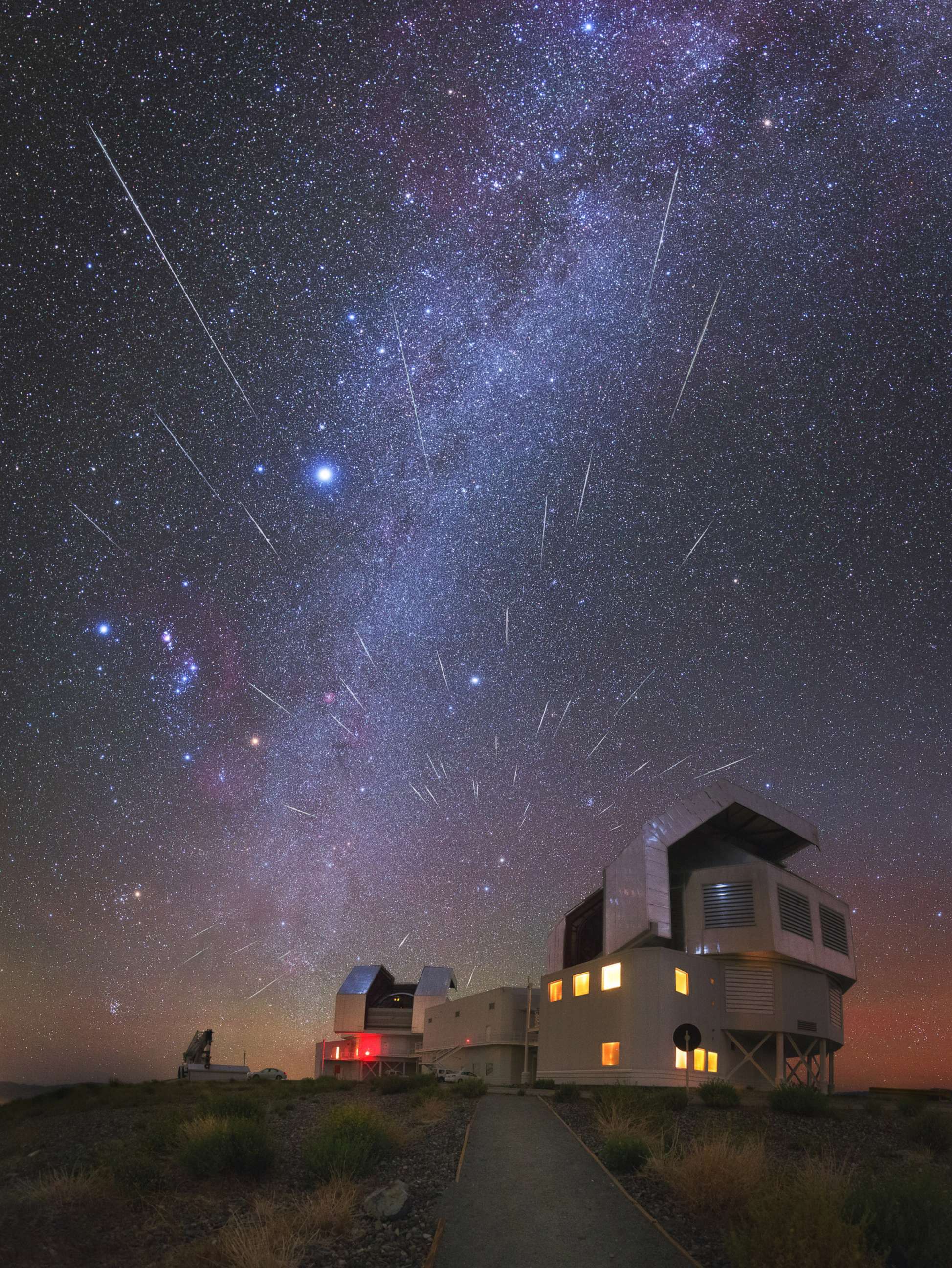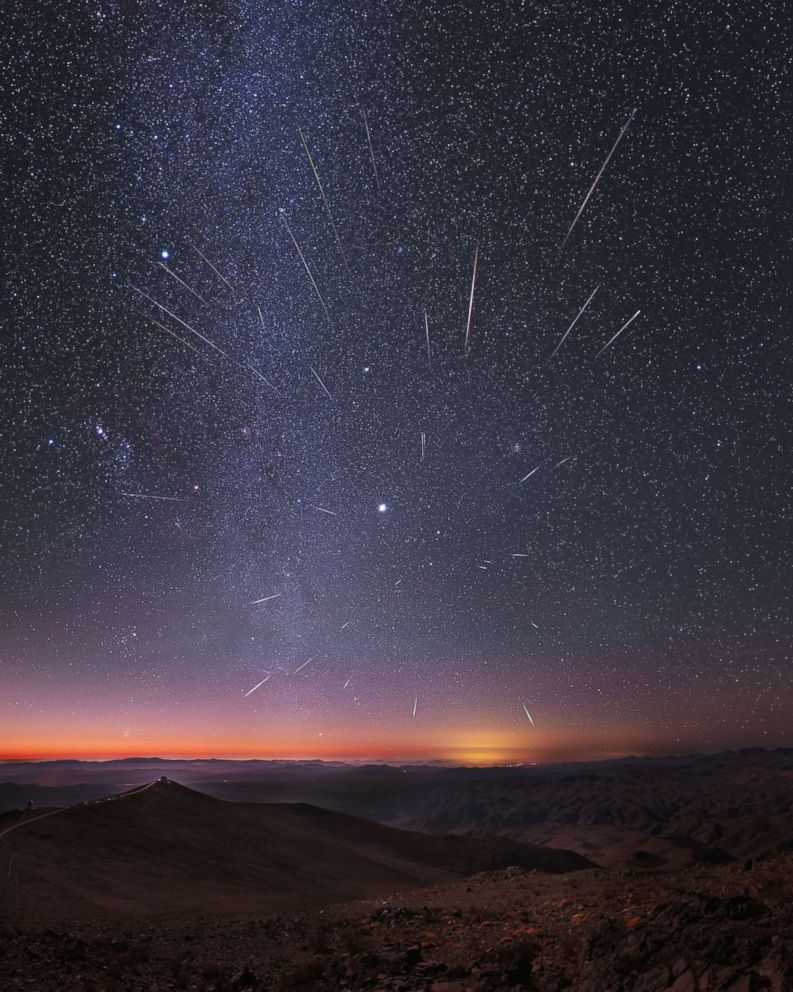Geminid meteor shower could be the year's best, scientists say
The Geminid meteor shower will be one of the best of the year, scientists say.
— -- Skywatchers are in for a dazzling show tonight. The annual Geminid meteor shower that will streak across the night sky will be one of the best of the year, scientists say.
The Geminid meteors are expected to peak overnight. With good weather conditions, the cosmic display can be seen between 7:30 p.m. and dawn local time. The largest number of meteors will be visible between midnight and 4 a.m. local time, according to NASA.
"With August's Perseids obscured by bright moonlight, the Geminids will be the best shower this year," said Bill Cooke with NASA's Meteoroid Environment Office. "The thin, waning crescent Moon won't spoil the show."

Considered one of the year's most reliable meteor showers, the Geminids occur every December when Earth passes through a vast trail of dusty debris shed by a rocky object named 3200 Phaethon. The debris burns up when it runs into the Earth's atmosphere in a spate of "shooting stars," Cooke said.
The Geminid meteors are named for the constellation Gemini, from which they appear to come. They are typically bright and easy to spot without telescopes or binoculars; these meteors can be seen with the naked eye under clear, dark skies over most of the world. Though the best view is from the Northern Hemisphere, according to NASA.

Not all of the meteors visible during the same time will belong to the Geminid shower. Some might be from weaker, active showers such as the Monocerotids, Sigma Hydrids and the Comae Berenicids, Cooke said.
"When you see a meteor, try to trace it backwards," he said. "If you end up in the constellation Gemini, there's a good chance you've seen a Geminid."




